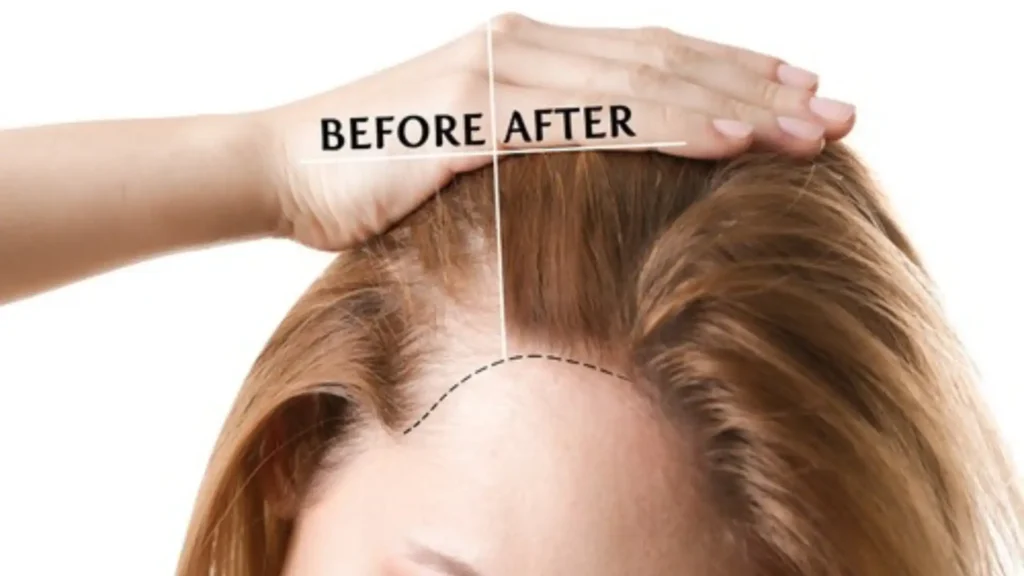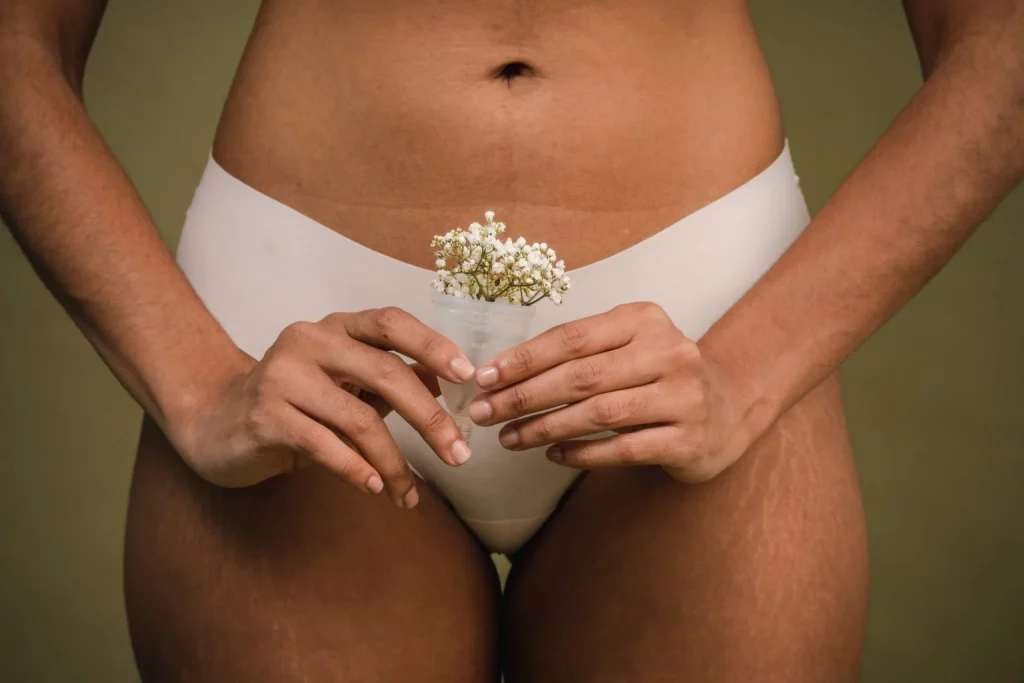Are you taking note of what your fingernails are telling you about your health? Yes, your eyes could also be the window to the soul, but your fingernails can offer you a glimpse of what is happening elsewhere in your body. Besides keeping your nails looking nice, you almost certainly don’t spend an excessive amount of time brooding about your nails, but they will offer valuable clues to your wellbeing.
According to the Mayo Clinic, our nails are made from layers of a protein called keratin. They grow from the nail matrix, located underneath the cuticle. As new cells grow, the older cells become hard and tightly packed and are eventually pushed out toward the fingertip. Because fingernails grow so slowly, they will offer a peek into your body’s recent past.
The Mayo Clinic noted that healthy nails are pink and smooth. Some variations, like ridges that run the length of the nail, are harmless while “others can signal health concerns.” Worried about your talons? These are the surprising things your fingernails can tell you about your health.
Yellow fingernails could be a sign of a fungal infection
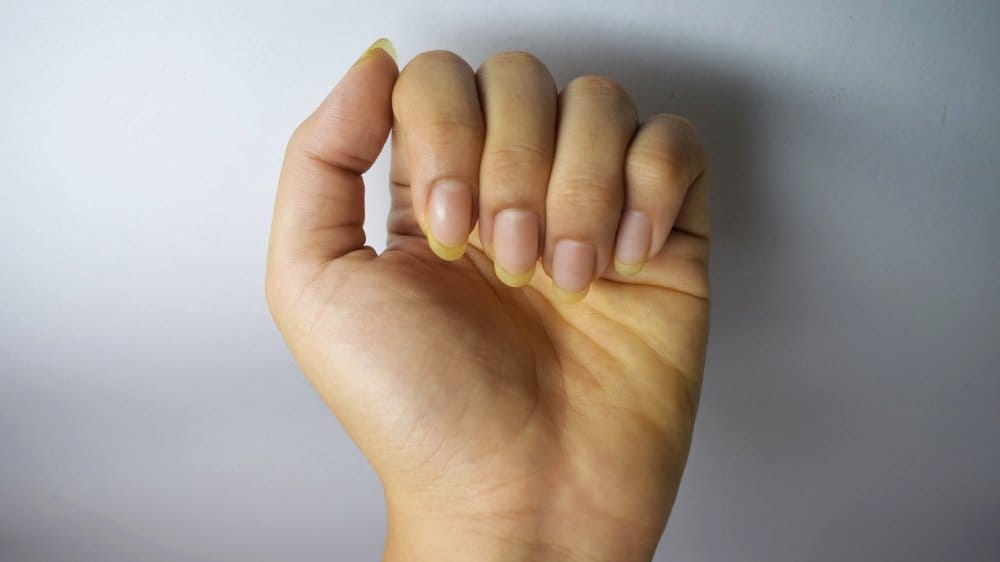
If you’ve got yellow spots under your nails or the entire nail has turned yellow, you’ll have a mycosis. referred to as onychomycosis, fungal nail infections can cause discoloration and thickening of the nails. they’ll also make them more brittle. Fungal infections are more common on toenails, but fingernails aren’t immune. The infection is caused by dermatophytes, a kind of fungi that needs keratin so as to grow.
According to the Centers for Disease Control and Prevention (CDC), fungal nail infections are often hard to cure and typically require prescription oral antifungal medication. In very severe cases, a doctor may have to completely remove the affected nail. to stop fungal infections, the CDC recommends keeping nails clean, dry, and well-trimmed. you ought to also avoid sharing nail clippers.
However, yellow nails aren’t always a health concern. most frequently, they’re simply the results of the nail cosmetics we use. As Self-explained, dark-colored polishes can stain nails yellow because the coloring agent in them reacts with the nail plate. The formaldehyde in nail enamel also can react with the keratin in nails, turning them yellow and making them brittle.
Low oxygen levels can lead to blue fingernails
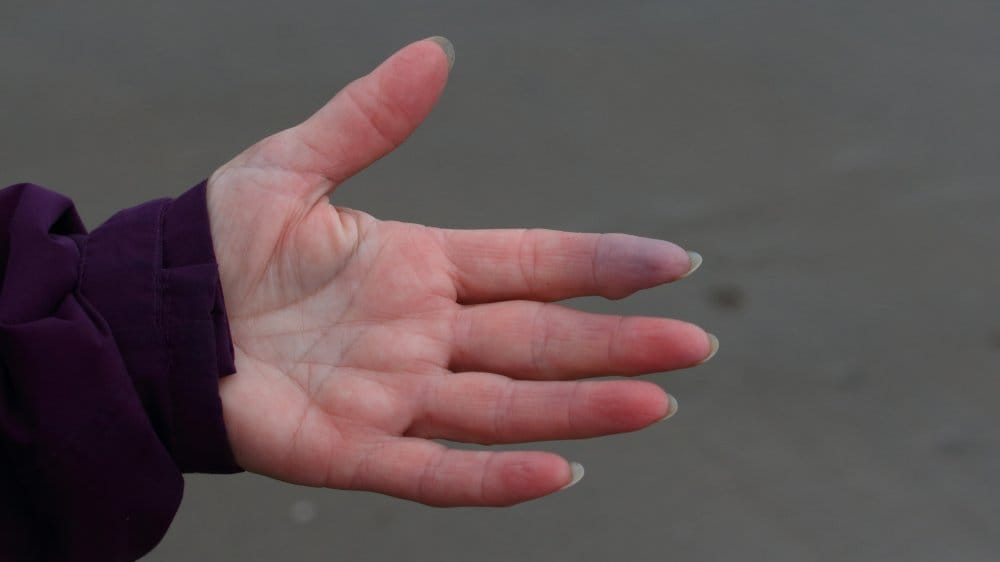
Because our nails are on our extremities, distant from our lungs and heart, and fed only by small blood vessels, they will be a superb indicator of low oxygen levels within the blood. Healthline noted that the nail bed turns purplish-blue when it doesn’t get enough oxygen, which color shows through the translucent nail above. Sometimes the shortage of oxygen is merely temporary and thanks to cold weather; the temperature causes the blood vessels within the fingertips to contract, preventing oxygen-rich blood from reaching the nail bed. But if your nails are blue all the time, this might indicate a more serious underlying ill-health.
According to the Mayo Clinic, there are many conditions associated with breathing or circulation which will cause low oxygen levels (hypoxemia). These include chronic obstructive pulmonary disease (COPD), emphysema, asthma, congenital heart condition, apnea, and even certain medications.
A pulse oximeter is often wont to measure blood oxygen levels. Normal values range between 95 and one hundred pc, and anything under 90 percent is taken into account low.
Kidney disease can cause fingernail color changes
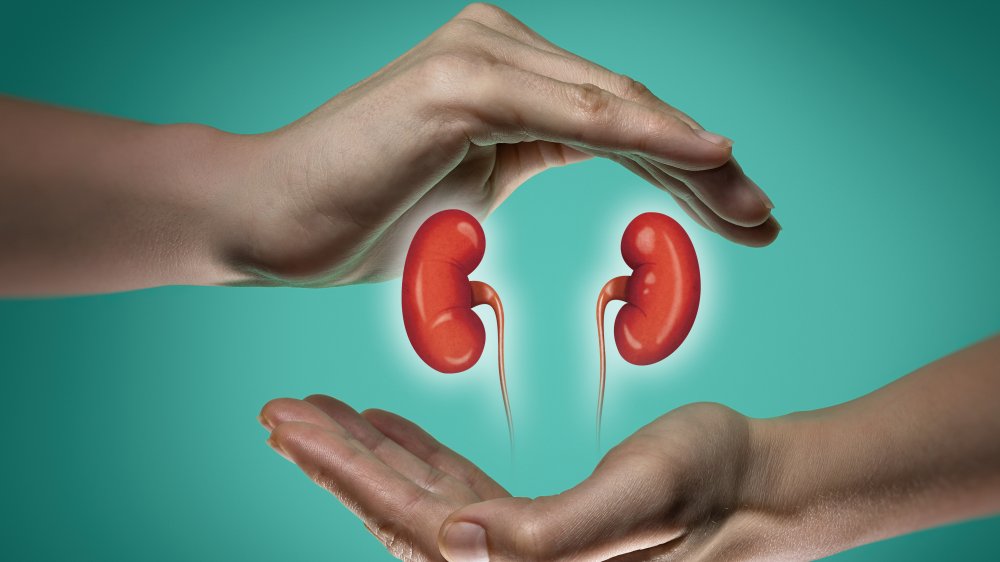
In a paper published within the Journal of General general medicine in 2016, medical doctors Siwadon Pitukweerakul and Sree Pilla discussed a phenomenon referred to as Lindsay’s nails. Also referred to as half-and-half nails, Lindsay’s nails are white near the cuticle, but 20 to 60 percent of the nail bed closest to the fingertip may be a reddish-brown. Although it’s unclear why this color change happens, it’s going to flow from to a better concentration of the beta-melanocyte-stimulating hormone. The paper’s authors noted that Lindsay’s nails, named after the researcher who first documented them in 1967, are found in approximately 40 percent of people with chronic renal disorder.
According to the Centers for Disease Control and Prevention, chronic renal disorder (CKD) occurs when your kidneys can’t filter blood properly. this will cause waste products to create up within the body, which successively can cause other health issues, including high vital signs, heart condition, stroke, and early death. CKD may be a progressive condition and may eventually cause renal failure. An estimated 37 million Americans — 15 percent of adults — are believed to possess CKD, but 9 out of 10 are unaware they need the condition.
Liver disease can cause changes in fingernail coloration
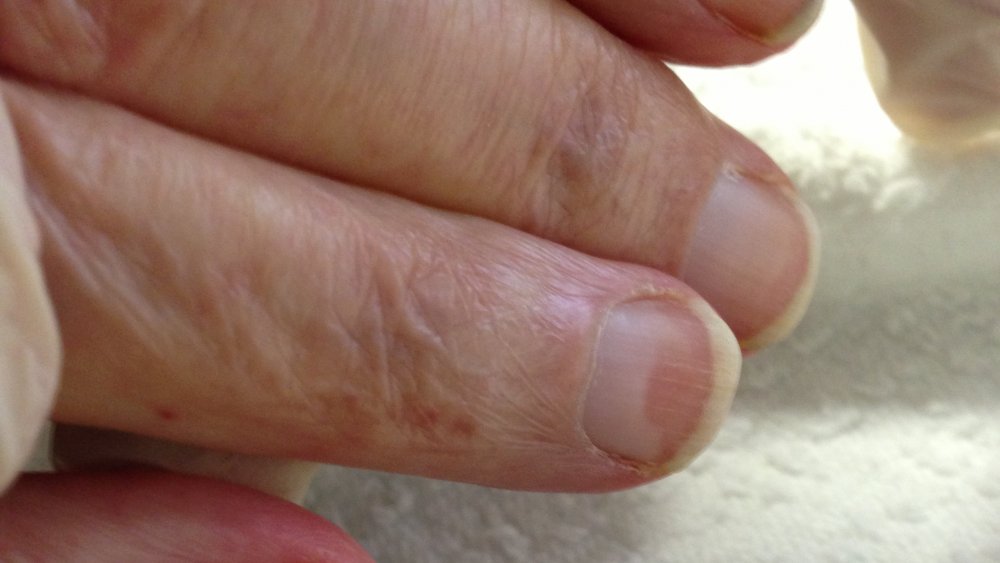
In addition to Lindsay’s nails, the 2016 paper published within the Journal of General general medicine also made mention of a phenomenon referred to as Terry’s nails. during this condition, approximately 80 percent of the nail bed is white, with a 0.5–3 mm brown or pink band at the top of the nail.
Healthline noted that the surface of Terry’s nails can also change, appearing like ground glass. The whiteness of the nail is believed to flow from to fewer blood vessels and more animal tissue than is seen in typical nails. The American Academy of Family Physicians reported that although Terry’s nails aren’t always related to cirrhosis, 80 percent of people with this liver condition have this distinctive nail coloring.
According to the National Institutes of Health, cirrhosis occurs when the liver is permanently scarred. This connective tissue replaces healthy liver tissue and prevents the organ from functioning properly. this will cause a variety of complications, including infection, cancer, and insulin resistance. Eventually, the connective tissue may cause liver failure. Approximately one in 400 adults have cirrhosis, although lack of a proper diagnosis may mean that the particular number is higher.
Low protein levels in your blood may show up in your fingernails
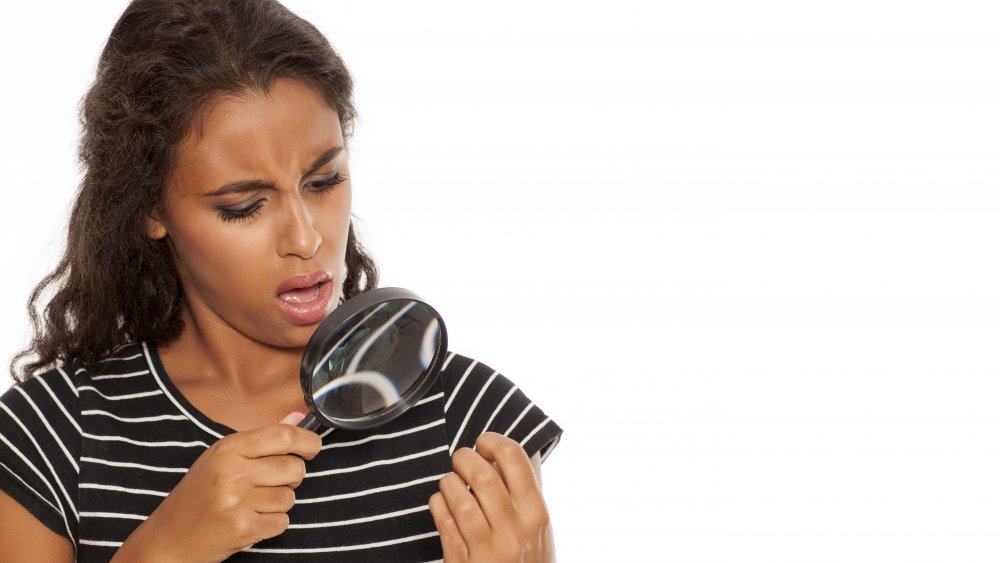
In addition to paint changes, lines and grooves on the nails are often a symbol that something potentially serious goes on together with your health. consistent with WebMD, Muehrcke’s lines are a double band of white lines that pass the nail and do not grow out because the nail grows. The lines don’t cause dents within the nail, and therefore the nail bed underneath the nail is healthy. These lines may temporarily disappear when pressure is applied. They’re usually most clearly seen on the index, middle, and ring fingers and infrequently visible on the thumb.
A 2018 paper published within the journal Autopsy & Case Reports explained that Muehrcke’s lines, named after the researcher who first documented them in 1956, are related to hypoalbuminemia (low albumin levels within the blood). Albumin may be a protein found in plasma that helps maintain vital signs and transports hormones and other substances throughout the body. Albumin levels below 3.4 g/dL are considered low. Causes of hypoalbuminemia include kidney damage, liver failure, insufficient protein intake, and inability to properly absorb protein. The paper noted that when albumin levels return to normal, Muehrcke’s lines disappear.
A dark streak under your fingernail could be melanoma
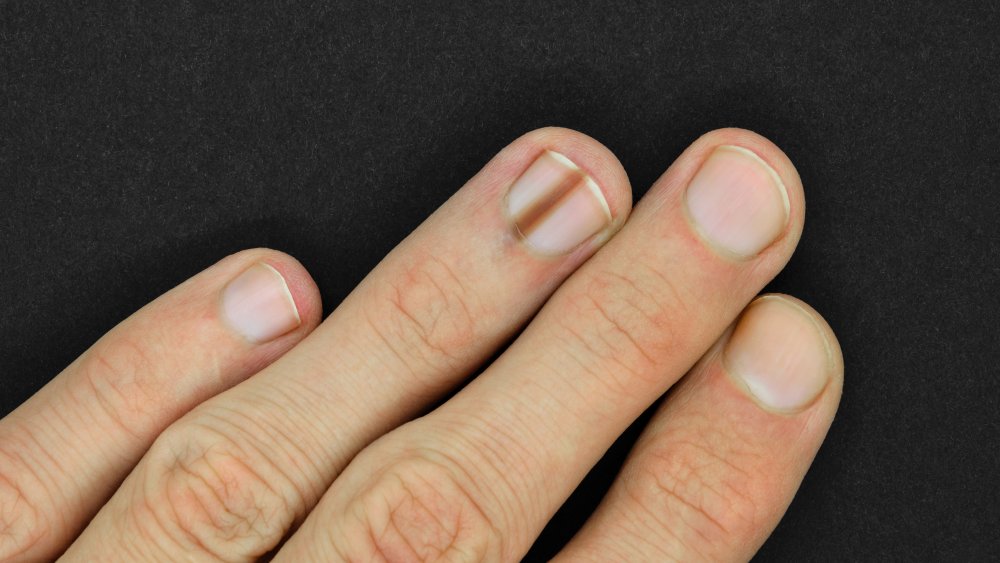
Although fair-skinned individuals are 20 times more likely to be diagnosed with melanoma than darker-skinned individuals, acral lentiginous melanoma (ALM) may be a subtype that’s most ordinarily seen in people with darker skin or Asian ancestry. ALM is really unrelated to sun exposure and sometimes develops under a nail, where it creates a dark, narrow vertical stripe. The thumb or great toe are the digits most frequently affected. because cancer progresses, the nail may crack and break.
According to a study published within the Archives of Dermatology in 2009, ALM features a lower survival rate than other sorts of melanoma. The study’s authors suggested this might be because it’s more likely to possess reached a later stage before being diagnosed. The five-year survival rate for ALM was 80.3 percent (versus 91.3 percent for all melanomas), while the 10-year survival rate was 67.5 percent (versus 87.5 percent for all melanomas).
However, not all dark lines under the nail are dangerous. consistent with Healthline, black or reddish-brown vertical lines under the nail, referred to as splinter hemorrhages, are most frequently caused by trauma to the nail bed, resulting in a burst vessel. Still, you’ll be wanting to consult your dermatologist to form sure.
Many illnesses can cause your fingernails to temporarily stop growing, leading to Beau’s lines

Because your nails are continually growing, anything that temporarily disrupts that growth will create visible damage to the nail. during a 2015 paper published within the Indian Dermatology Online Journal, Dr. Archana Singal and Dr. Rahul Arora referenced Beau’s lines, horizontal grooves within the nail that result from a quick pause in nail growth. If a groove only appears on one fingernail, it’s presumably thanks to trauma thereto particular nail matrix. But if Beau’s lines appear on all fingernails and toenails, it’s presumably a symbol of a systemic illness or condition.
The authors noted that there are many things that will halt nail growth, including diseases that cause high fever (such as mumps), pneumonia, under-active parathyroid, and Kawasaki disease (inflammation of the blood vessels). The width of the groove indicates how long the nail was unable to grow, and if nail growth stops for 2 weeks or more, Beau’s lines may become so deep that they cause the whole nail to break away from the nail bed.
Psoriasis can affect your fingernails
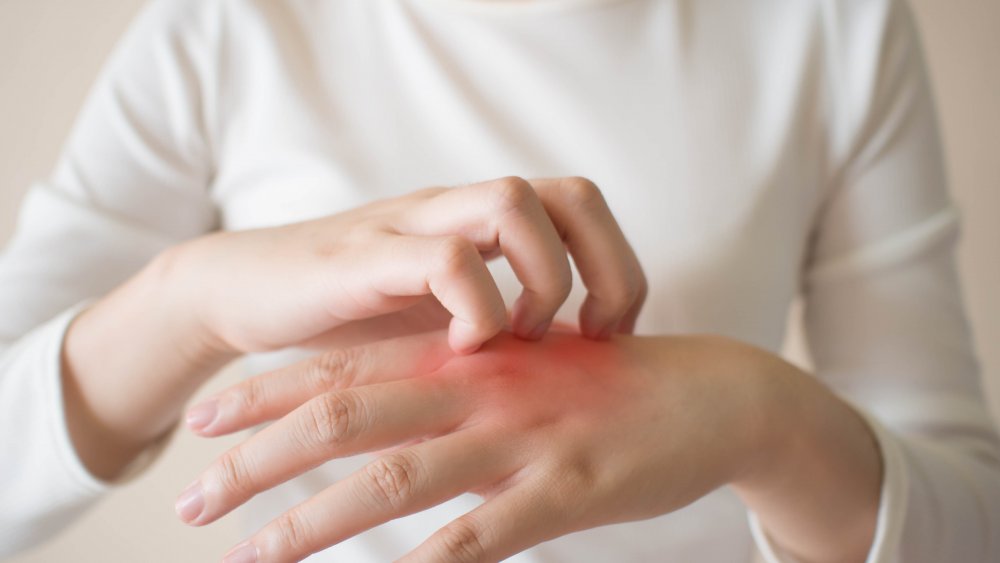
No one ever wants to lose a nail, but how the nail separates from the nail bed may be a good indicator of why it fell off in the first place. Onycholysis is the separation of the nail beginning at the fingertip end and dealing back toward the cuticle. Trauma to the nail is typically the explanation for this relatively common sort of nail shedding. But when the nail separates beginning at the cuticle side (onychomadesis), psoriasis could also be the cause.
Psoriasis may be a common inflammatory condition during which an overactive system causes skin cells to regenerate faster than normal. consistent with the National Psoriasis Foundation, 30 percent of people with psoriasis even have rheumatoid arthritis, during which the joints, tendons, and ligaments are suffering from inflammation. A 2017 paper within the journal Reumatologia found that about half of individuals with psoriasis and 80 percent of individuals with rheumatoid arthritis had associated nail issues. These issues can include pitting, changes in shape, thickening, and discoloration.
A 2017 paper published within the journal Cutis noted that when onychomadesis occurs, the nail or nails usually spontaneously begin to regrow within 12 weeks.
Thyroid disease can cause many fingernail changes
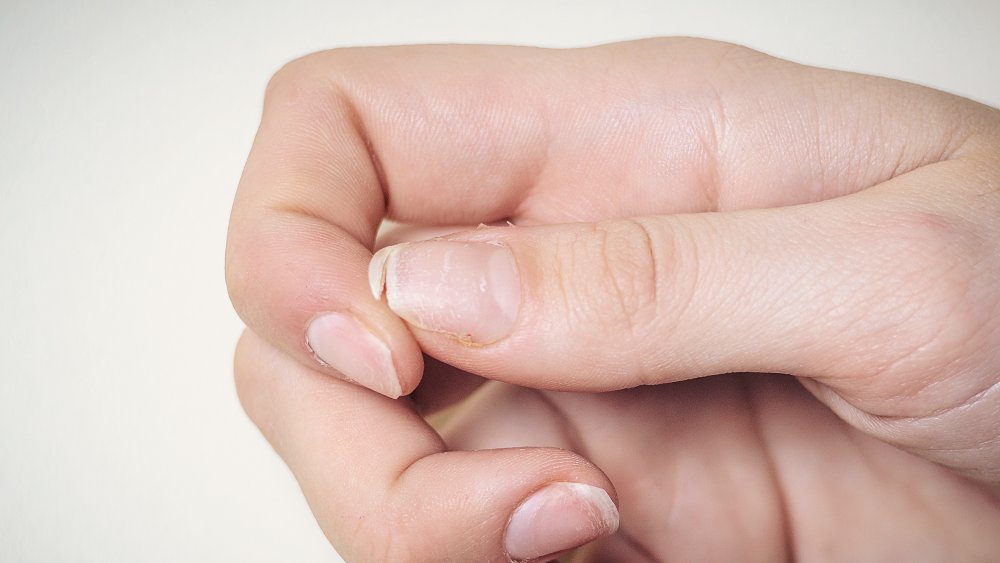
If you’re having issues together with your thyroid — the butterfly-shaped gland that sits ahead of your windpipe and controls a good sort of processes associated with growth and metabolism — it can cause many issues throughout your body, including your nails. In fact, consistent with the American Academy of Dermatology, a dermatologist could also be the primary doctor to suspect you’ve got a thyroid issue because many symptoms are often seen on the nails, skin, and hair.
Depending on whether your thyroid is over-or under-active, nails may grow slower or faster than usual. they’ll also become thick, dry, soft, or brittle and susceptible to breaking or crumbling. Nails may lift up or curve down around a fingertip that appears swollen with the skin at the cuticle.
Thyroid disease is an umbrella term for any condition that causes your thyroid to supply an insufficient or excessive amount of hormones. Thyroid disease is common, affecting approximately 20 million Americans. Women are five to eight times more likely than men to possess thyroid disease. Thyroiditis (inflammation within the thyroid), insufficient or excessive iodine intake, Hashimoto’s disease, and Graves’ disease are the foremost common causes of thyroid disease.
Discover more nail trends:
- Perfecting Your Gel Polish Manicure: A Comprehensive Guide
- 15 Creative 3D Nail Designs to Spark Your Next Manicure
- 10 Adorable and Simple Valentine’s Day Nail Designs
- Follow us on Facebook
- Follow us on Pinterest



